The Fens and the flat Earth conspiracy
 Getty Images
Getty ImagesConspiracy theories might feel like a modern phenomenon, but one has its roots in the flat landscape of the Cambridgeshire Fens and dates back nearly 200 years.
Camay Chapman-Cameron, who lives in March, has been exploring how Fenland was for many years the centre of a series of experiments to prove the Earth was flat.
The local historian came across the story of Samuel Rowbotham, a 'flat-earther' who was desperate to disprove the ancient knowledge our planet is a globe.
"He was what we would call today a conspiracy theorist," says Ms Chapman-Cameron, a volunteer at March and District Museum.
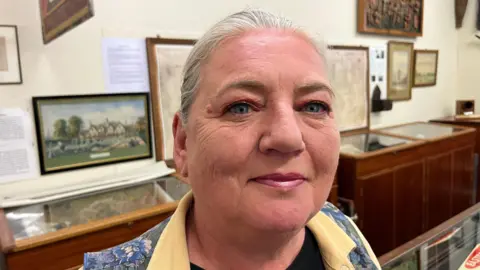 John Devine/BBC
John Devine/BBCThe rise of flat Earth belief began with American author Washington Irving in his 1828 biography of Christopher Columbus.
"In it he declared that, as a man of his time, Christopher Columbus and his contemporaries believed the Earth was flat, which led to his navigation errors, and the fear of his crew that they would sail off the edge," said Ms Chapman-Cameron.
"This is completely false. Columbus's errors were to do with miscalculating distances, and no one knew better than a sailor the Earth was a globe."
While there had been belief in the flat Earth among the peoples of ancient India, China and Mesopotamia (modern day Iraq), this had largely been overturned from 5th Century BC.
More recently, physicist and mathematician Sir Isaac Newton (1642-1727) was the first to suggest it was not perfectly round but an oblate spheroid.
What Mr Rowbotham was attempting to do was overturn at least 2,500 years of acceptance the world we inhabit is a globe.
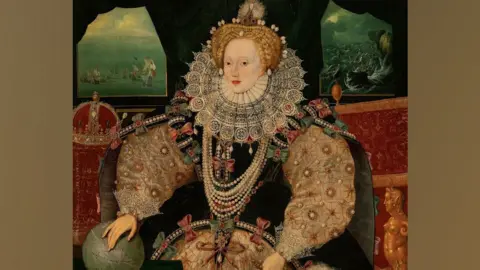
The Manchester-born man had studied the Bible intensely as a child and was part of a devout movement of people who shared the view "any interaction between religion and science will lead to hostilities", said Ms Chapman-Cameron, who previously worked at Cambridge's Fitzwilliam Museum, Brighton's Royal Pavilion and Bath's Roman Baths.
"Rowbotham hated the discoveries of Newton and wanted to destroy his legacy, so he thought the way to do this was to come to the Old Bedford River - a six-mile stretch of completely straight, flat water in the Fens and conduct an experiment," she said.
To enable this, he joined a socialist farming collective called the Manea Colony, near Ely.
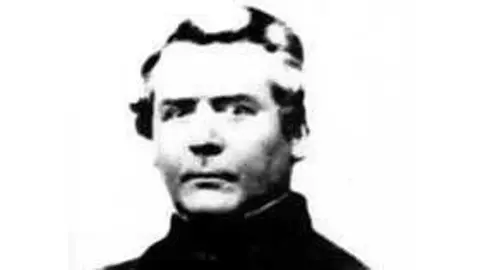 Camay Chapman-Cameron handout
Camay Chapman-Cameron handout"Rowbotham sent a boat along the length of the river with a flag on a mast and assumed that if he could see it through his telescope along its entire journey to Welney in Norfolk, it would prove the world was flat," she said.
He declared he was able to see it all the way to Welney Bridge, six miles away (9.7km), and to him this proved his theory.
Mr Rowbotham repeated the attempt five times in the next 30 years, at the same spot, with the same method and getting the same result, according to Ms Chapman-Cameron's research into the Bedford Level Experiments.
He was also a brilliant orator and toured the country giving lectures on his findings, even publishing a book 'Earth not a Globe' in 1865.
"In 1861, Samuel married a 15-year-old and had 15 children with her, so his flat Earth work took a back seat," she said.
John Hampden (1819-1891) took up the baton, having Rowbotham's book.
He was "captivated, convinced, and rushed headlong into the flat Earth fray," said Ms Chapman-Cameron.
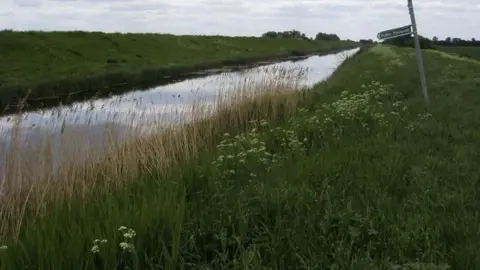 Shaun Ferguson/Geograph
Shaun Ferguson/GeographThe son of a clergyman, Mr Hampden "was very much engaged with what he considered to be attacks on God by the scientific community", she said.
"Hampden realised that Rowbotham's 'proof' had been completely ignored by the scientific community, and was sinking into obscurity."
As a result, he offered £500 to anyone who could prove Mr Rowbotham's flat Earth theory wrong.
The advertisement was spotted by the eminent naturalist and geographer Alfred Russel Wallace (1823 to 1913) and on 5 March 1870, the pair met at the Old Bedford River.
With them were two referees and "a circus of the curious and the credulous".
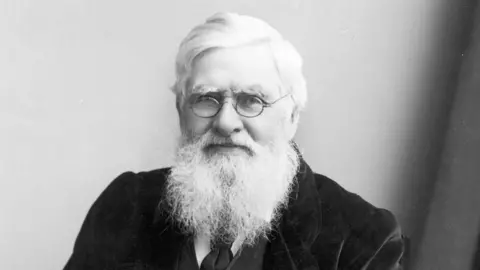 Getty Images
Getty ImagesMr Wallace, using the laws of refraction, was able to prove the Earth did have a curvature. Mr Hampden rejected this and refused to pay up.
Lawsuits, libel cases, periods in prison and death threats followed.
"In the end, Wallace never received a penny of the wager money, but was hounded by Hampden until the latter died in 1891," said Ms Chapman-Cameron.
Elizabeth, Lady Blount (1850-1935), was the next to energetically support the flat Earth theory, although she was mostly met by ridicule.
It has since found some traction in the United States, where proponents use an ancient Jewish text, the Book of Enoch, to justify their belief.
"They seem to me to share the same towering self-righteous rage as Samuel Rowbotham and John Hampden," she said.
Follow Cambridgeshire news on BBC Sounds, Facebook, Instagram and X.
